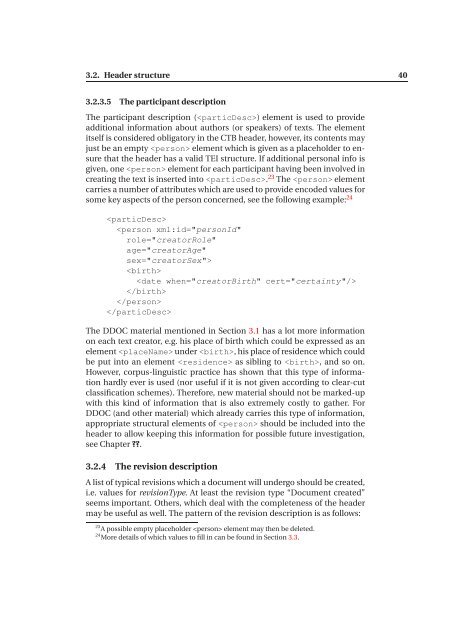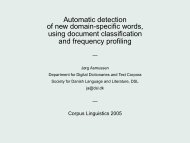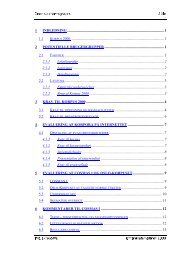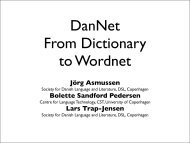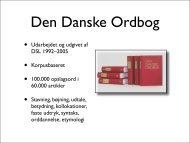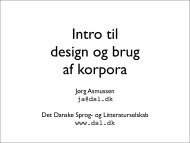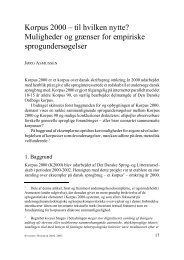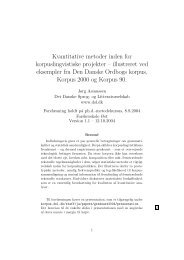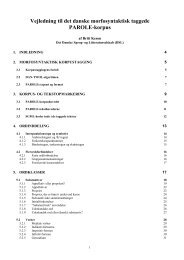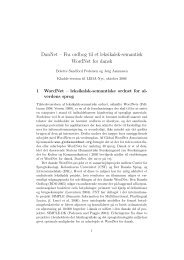The Corpus Thread - Det Danske Sprog- og Litteraturselskab
The Corpus Thread - Det Danske Sprog- og Litteraturselskab
The Corpus Thread - Det Danske Sprog- og Litteraturselskab
Create successful ePaper yourself
Turn your PDF publications into a flip-book with our unique Google optimized e-Paper software.
3.2. Header structure 40<br />
3.2.3.5 <strong>The</strong> participant description<br />
<strong>The</strong> participant description () element is used to provide<br />
additional information about authors (or speakers) of texts. <strong>The</strong> element<br />
itself is considered obligatory in the CTB header, however, its contents may<br />
just be an empty element which is given as a placeholder to ensure<br />
that the header has a valid TEI structure. If additional personal info is<br />
given, one element for each participant having been involved in<br />
creating the text is inserted into. 23 <strong>The</strong> element<br />
carries a number of attributes which are used to provide encoded values for<br />
some key aspects of the person concerned, see the following example: 24<br />
<br />
<br />
<br />
<br />
<br />
<br />
<br />
<strong>The</strong> DDOC material mentioned in Section 3.1 has a lot more information<br />
on each text creator, e.g. his place of birth which could be expressed as an<br />
element under, his place of residence which could<br />
be put into an element as sibling to , and so on.<br />
However, corpus-linguistic practice has shown that this type of information<br />
hardly ever is used (nor useful if it is not given according to clear-cut<br />
classification schemes). <strong>The</strong>refore, new material should not be marked-up<br />
with this kind of information that is also extremely costly to gather. For<br />
DDOC (and other material) which already carries this type of information,<br />
appropriate structural elements of should be included into the<br />
header to allow keeping this information for possible future investigation,<br />
see Chapter ??.<br />
3.2.4 <strong>The</strong> revision description<br />
A list of typical revisions which a document will undergo should be created,<br />
i.e. values for revisionType. At least the revision type “Document created”<br />
seems important. Others, which deal with the completeness of the header<br />
may be useful as well. <strong>The</strong> pattern of the revision description is as follows:<br />
23 A possible empty placeholder element may then be deleted.<br />
24 More details of which values to fill in can be found in Section 3.3.


